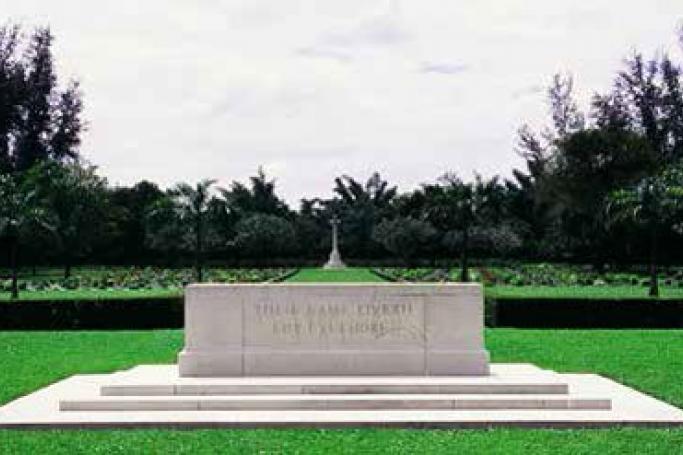Those interested in the history of the Second World War in Burma will be able to learn more following two announcements from the Commonwealth War Graves Commission.
Private Rupert Mellican, who served with the British Royal Army Medical Corps during the Second World War received a personalised pedestal marker at the site of his Mawlamyine grave, 68 years after his death.
“This is the first time ‘alternative commemoration’ has been reversed in Myanmar since democratic reforms occurred in 2011-2012,” said a press release from the Commission on February 3.
Private Rupert Mellican, buried with relatives at a family vault at Mawlamyine St Patrick’s Roman Catholic Cemetery, could not be commemorated at the time of his death due to a shortage of stonemasons in the country during the war.
CWGC Myanmar Manager Thet Mon said: “It is deeply rewarding that our efforts to commemorate this brave serviceman at his grave have reached fruition.
As of April 25, ANZAC Day; a day of remembrance for soldiers from Australia and New Zealand, visitors to Thanbyuzayat War Cemetery, about 65 kilometres (40miles) south of Mawlamyine will be able to use their smartphones to access historical archives and ‘digital artefacts’ providing the personal stories behind some of those buried at the site.
Visitors to the cemetery will be able scan a QR code attached to a panel to access links to the artefacts and personal stories.
“The most interesting relate to a George Hamilton Lamb,” said Mr Barney Cullum, media officer for the CWGC.
“One remarkable fact of Lamb’s story is that he was actually re-elected as an MP while still a prisoner of war in Burma,” said Mr Cullum.
“Like the other POWs, he had been captured by the Japanese in Singapore and was forced to build the Thai-Burma ‘death’ railway. He died of illness while working on the railway in 1943, aged 43.”
Thanbyuzayat is the final resting place of 3,770 Allied servicemen;1,651 Britons, 1,335 Australians, 621 Dutchmen,15 Indians, three New Zealanders and one Canadian.
Most of those buried there died while constructing and maintaining the Burma-Thailand railway during the Second World War, they number among more than 12,000 prisoners of war and an estimated 90,000 civilian workers who died during its construction.
Beginning in October 1942, two labour forces, over 60,000 Commonwealth, Dutch and American prisoners of war and 200,000 romusha: Asian forced labourers brought from Malaya and the Dutch East Indies, or conscripted in Burma and Thailand worked concurrently from opposite ends of the line and at many points in between.
Thanbyuzayat operated as a prisoner of war administration headquarters and base camp in September 1942, and in January 1943 a hospital was established here. The camp was evacuated in June 1943 after Allied bombing raids on a nearby railway marshalling yard and workshops led to heavy casualties.
Completed on 16 October 1943, the line, 415 kilometres long, ran from from Thanbyuzayat to Non Pladuk, Thailand.
After the war, the graves of the prisoners of war from camp burial grounds and isolated sites west of Nieke were transferred to Thanbyuzayat (except for the Americans, whose remains were repatriated).
Those buried east of Nieke were transferred along the railway into cemeteries at Chungkai and Kanchanaburi in Thailand.
This Article first appeared in the February 12, 2015 edition of Mizzima Weekly.
Mizzima Weekly is available in print in Yangon through Innwa Bookstore and through online subscription at www.mzineplus.com
You are viewing the old site.
Please update your bookmark to https://eng.mizzima.com.
Mizzima Weekly Magazine Issue...
14 December 2023
Spring Revolution Daily News f...
13 December 2023
New UK Burma sanctions welcome...
13 December 2023
Spring Revolution Daily News f...
12 December 2023
Spring Revolution Daily News f...
11 December 2023
Spring Revolution Daily News f...
08 December 2023
Spring Revolution Daily News f...
07 December 2023
Diaspora journalists increasin...
07 December 2023
Bangladesh ships 1,600 refugees to controversial island












